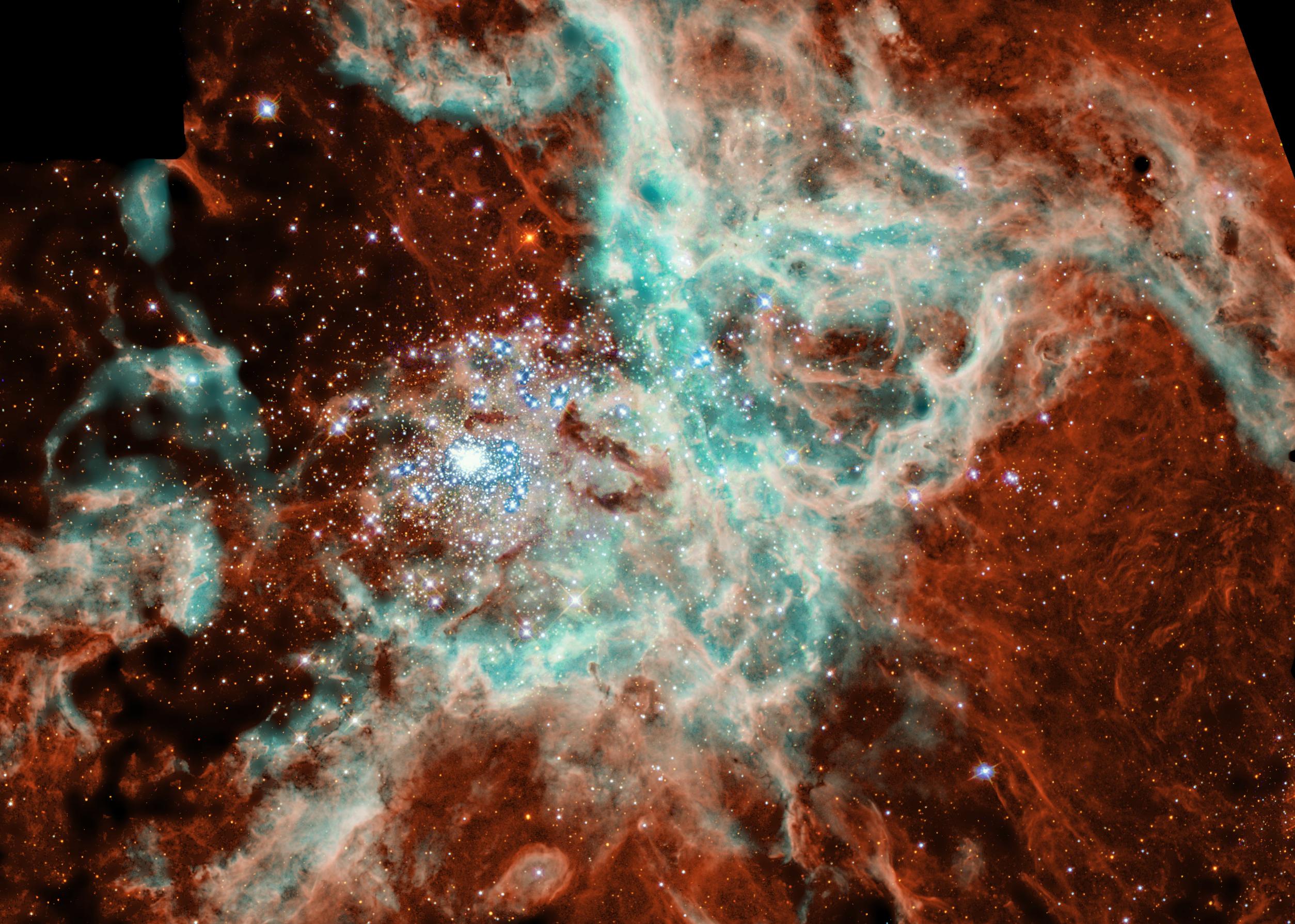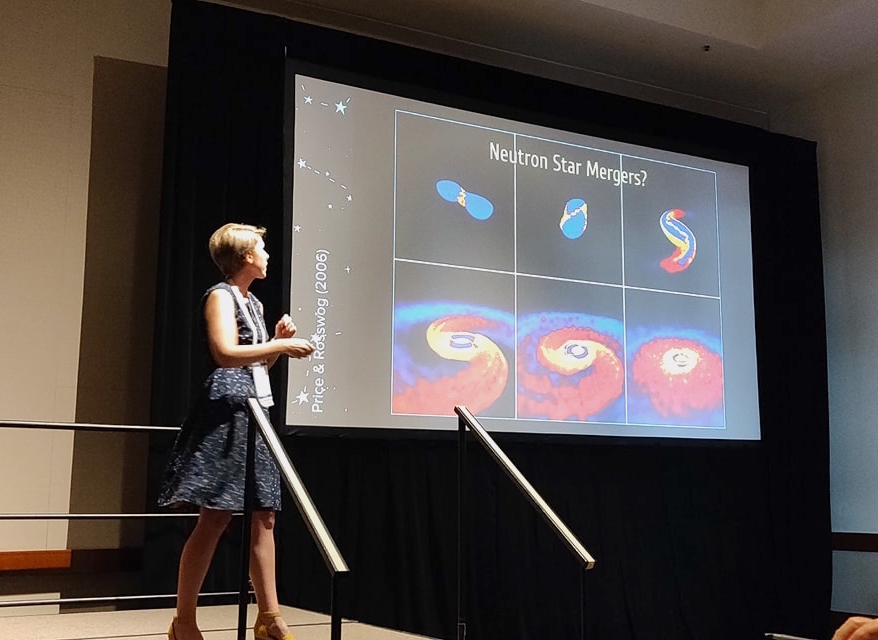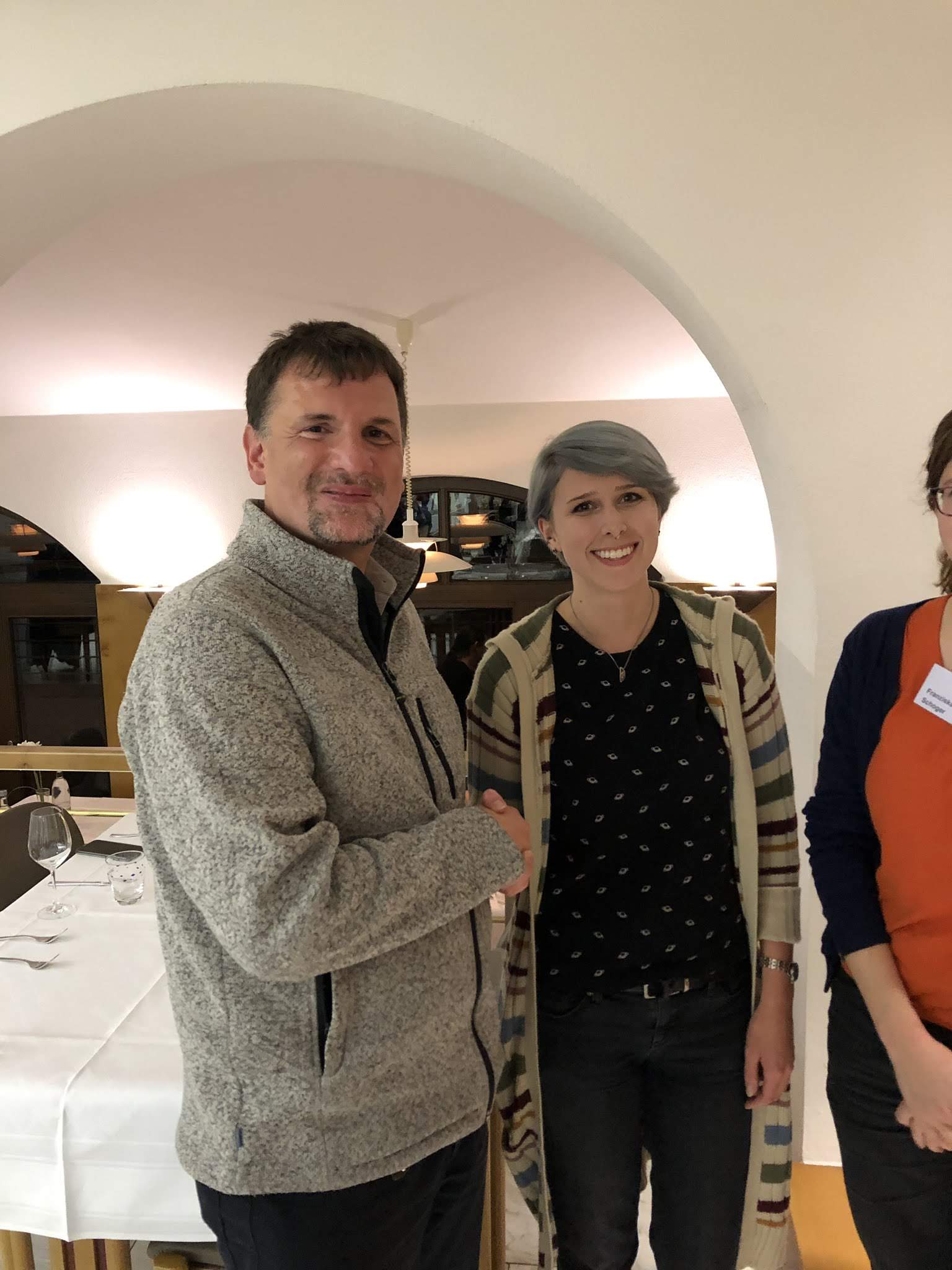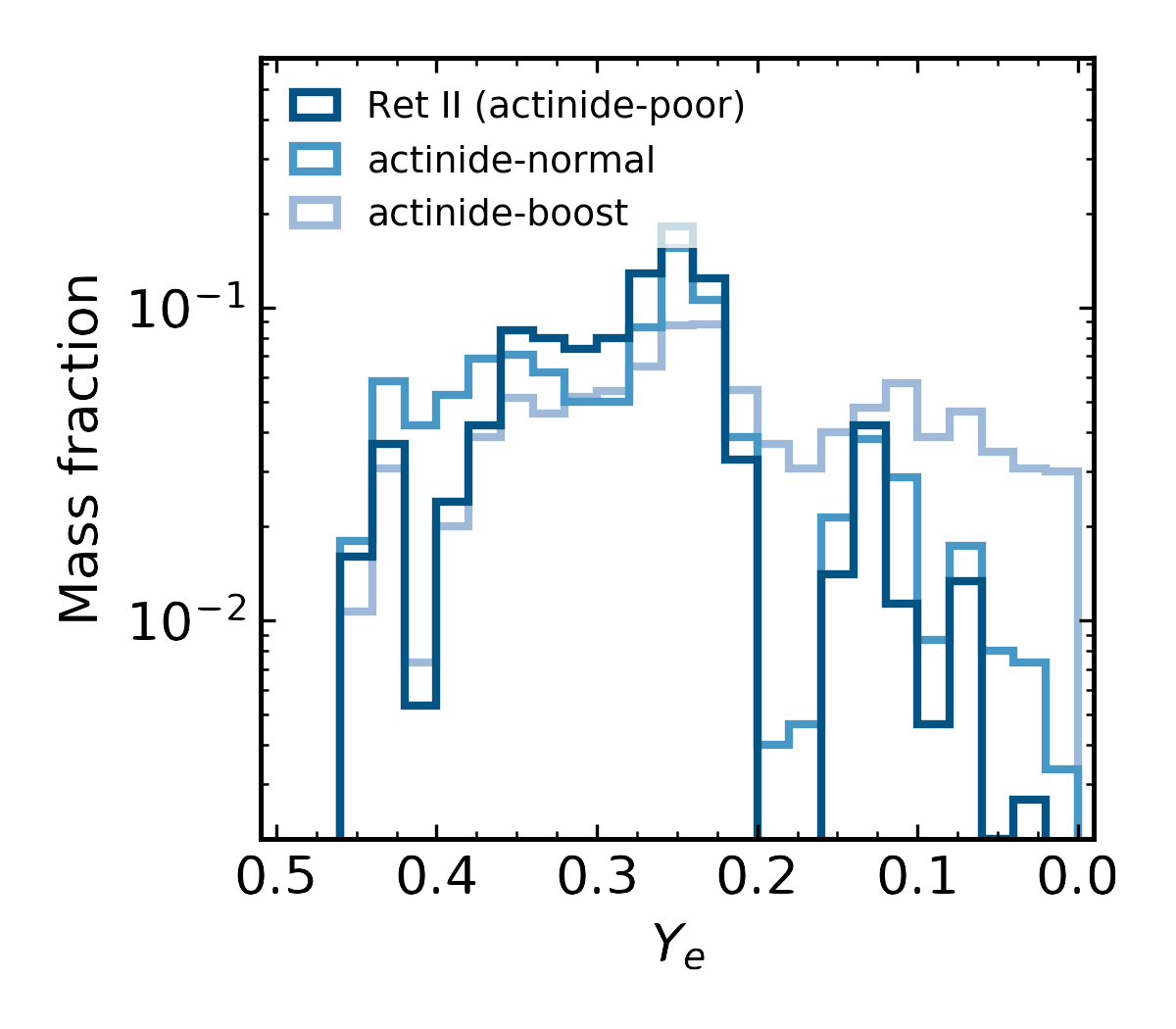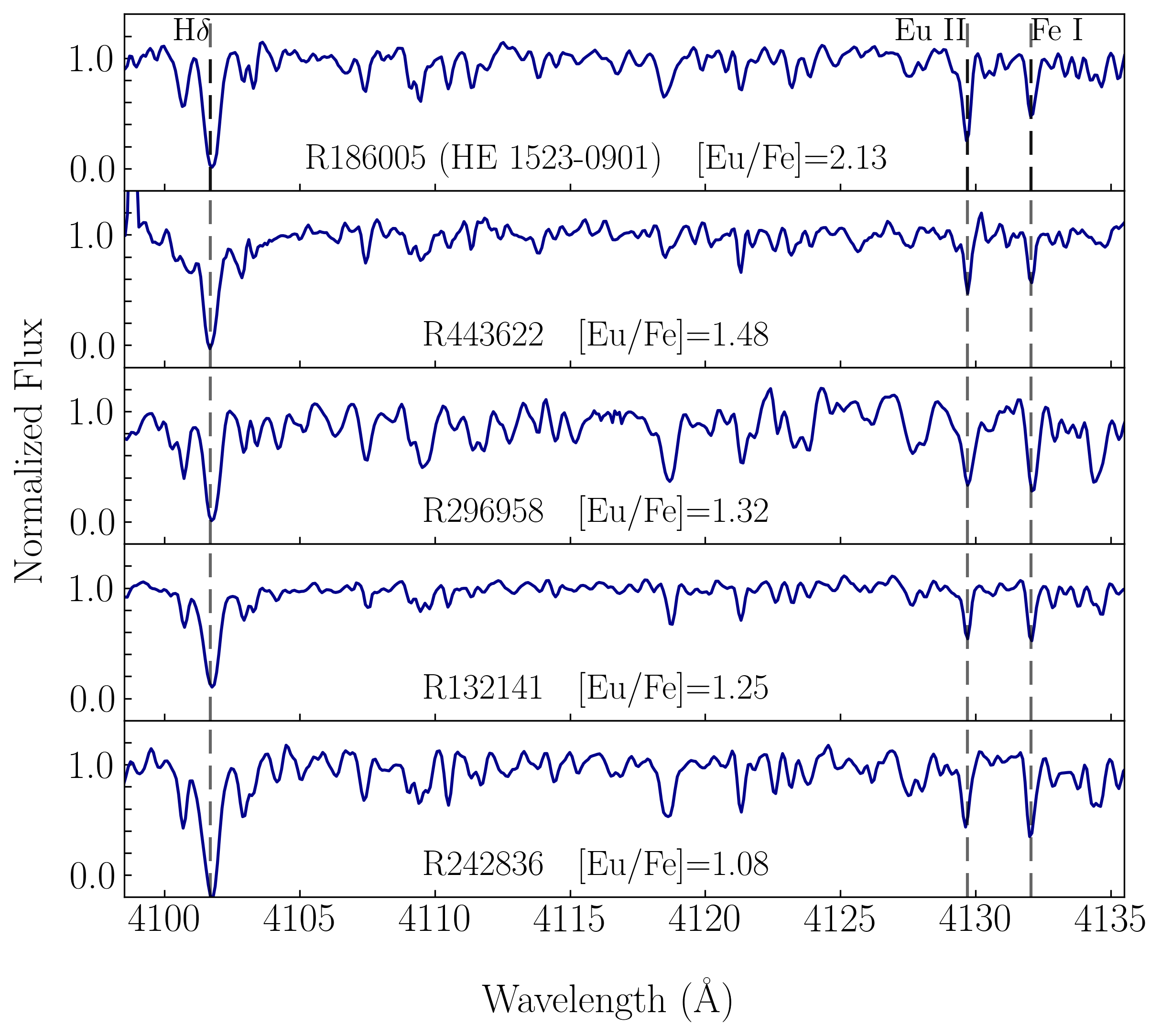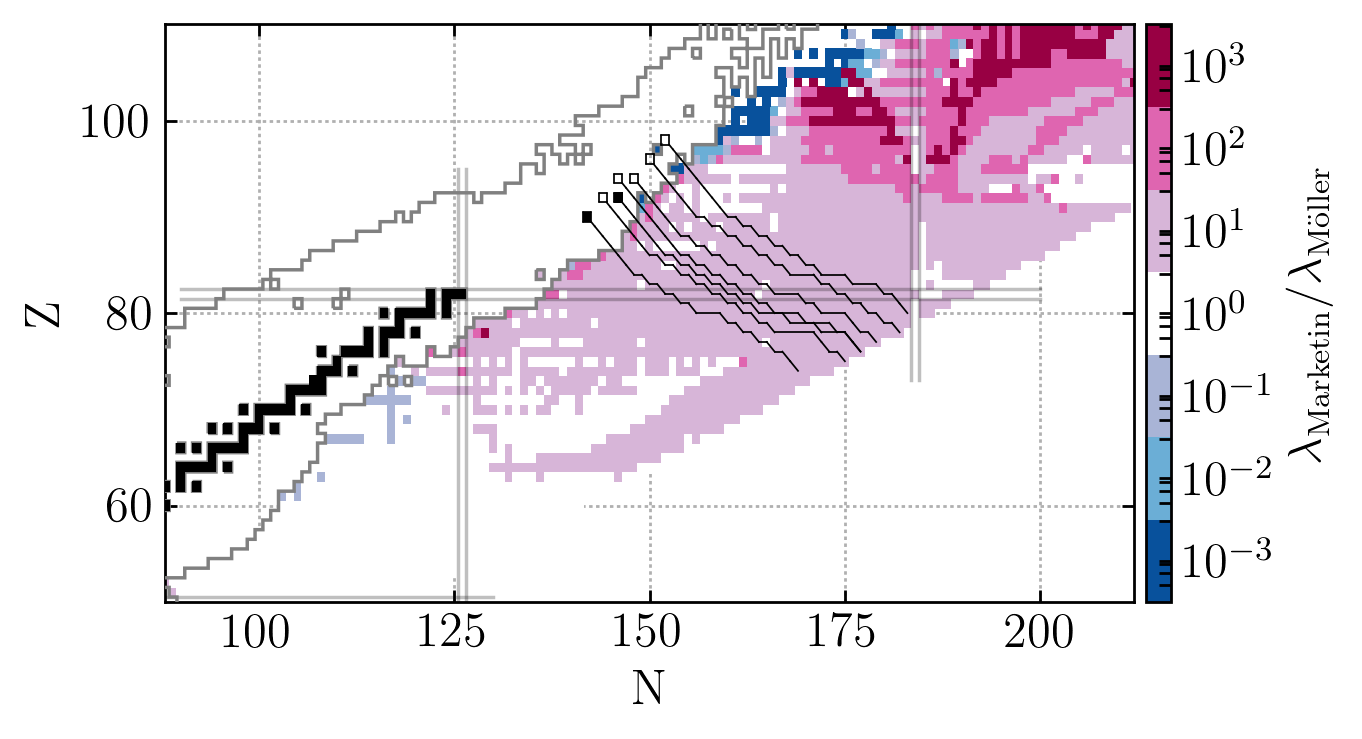Erika M. Holmbeck
✉ erikaholmbeck@gmail.com
Ph.D. Physics, University of Notre Dame
B.S. Astrophysics, University of California Los Angeles

I earned my Ph.D. in Physics at the University of Notre Dame in 2020, studying both the Theoretical Nuclear Astrophysics and Galactic Archaeology---or, as I like to call it, Galactic Genealogy. After a brief postdoc at Rochester Institute of Technology, I brought my NHFP Hubble Fellowship to Carnegie Observatories in Pasadena, CA. I am currently a staff scientist at Lawrence Livermore National Laboratory.
My research interests include the formation of the heavy elements, with a particular focus on the creation of actinides (Thorium and Uranium) in the Universe.
I observe and study metal-poor, chemically-enhanced stars with high-resolution spectroscopy. I have experience in high-resolution spectroscopy and data processing with telescopes such as the 2.5-m Irénée du Pont Telescope (Las Campanas Observatory), the 2.7-m Harlan J. Smith Telescope (McDonald Observatory), and the 6.5-m Magellan - Clay Telescope (Las Campanas Observatory).
In addition, I run nucleosynthesis simulations to investigate how elements are made through rapid neutron-capture (the r-process). These simulations require detailed understanding of the nuclear physics input as well as the astrophysical environment in which r-process nucleosynthesis takes place.
See more: Publications • Talks
 https://orcid.org/0000-0002-5463-6800
https://orcid.org/0000-0002-5463-6800